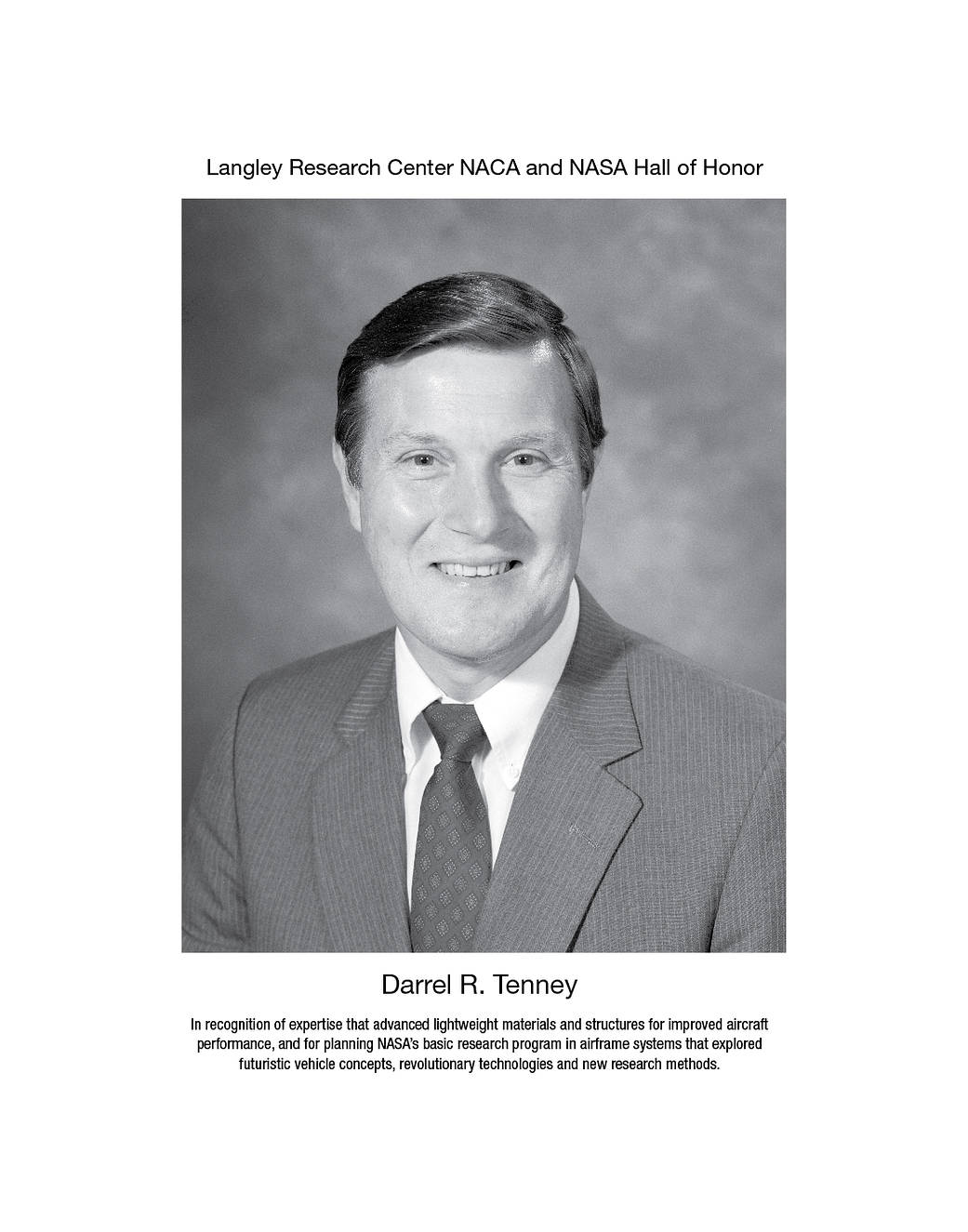
Darrel R. Tenney
Dr. Darrel R. Tenney (1942-) is an expert in aerospace metals and composite materials who led research efforts to advance lightweight materials and structures for improved aircraft performance and a NASA Aeronautics basic research program in airframe systems that explored futuristic vehicle concepts, revolutionary technologies, and new research methods.
Born in Buckhannon, West Virginia, Tenney received his bachelor’s degree from West Virginia Wesleyan University in 1964. He was an assistant professor at Virginia Tech where he earned a doctorate in materials engineering in 1974, shortly before coming to NASA Langley as a senior researcher. He is also a graduate of a Harvard University management program.
Tenney became head of the Environmental Effects Branch in 1980, then assistant chief of the Materials Division in 1986. He became division head a year later and worked to modernize Langley’s materials research capabilities.
Tenney also promoted research on a variety of new materials, including toughened graphite-epoxy composites, textile and stitched composites, polyimides, films, adhesives, and many others. Some of these materials were used in commercial and military aircraft, resulting in reduced vehicle weight, better fuel efficiency, and increased range. Langley alloy research also went into spacecraft design for the space shuttle cryotanks and the X-37B next generation launch vehicle.
Tenney became director of the Aerospace Vehicle Systems Technology Office from 1996-2004. In that leadership role he planned and advocated for NASA’s $230 million basic research program in airframe systems including advanced vehicle concepts, lightweight structures and materials, advanced aerosciences for design, aero mechanics of highly maneuverable vehicles, noise reduction, and technologies to enhance reliability and flight safety. In 1999-2000, Tenney was also a driving force in promoting the NASA nanotechnology initiative with Langley taking the lead role.
Tenney helped set the course for NASA aeronautics’ future with his 2001 paper, “Aeronautics Vision for the 21st Century,” which highlighted the use of smart sensors and other technologies for next generation aircraft. He was also the key architect of the “NASA Aeronautics Blueprint – Toward a Bold New Era of Aviation” in 2002, the central building block of a new national aeronautics framework.
Tenney authored or coauthored more than 80 publications and has won a number of awards, including the Presidential Rank of Meritorious Award for outstanding leadership in 1996 and 2001. He is a fellow of the American Society of Materials. Following his retirement in 2004, Tenney was the lead author of two books, including “Structural Framework for Flight,” which documented Langley’s major accomplishments in materials and structures for the past 60 years.


























